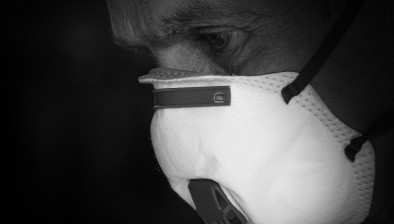Asbestos found in ‘hundreds of NHS buildings’ in Scotland

Trade unions have called for new legislation requiring the removal of all asbestos from public buildings after the substance was found in hundreds of NHS buildings across Scotland including hospitals.
Research carried out by Labour Research Department (LRD) for the TUC, STUC and the All Party Parliamentary Group on Occupational Safety and Health showed asbestos within all buildings across Scotland for which NHS Greater Glasgow and Clyde (NHSGGC) and NHS Dumfries and Galloway are the duty holders.
Asbestos is still the biggest workplace killer according to the Health and Safety Executive (HSE), and Britain has the highest rates of mesothelioma cases in the world. But new research reveals that the majority of NHS buildings – including hospitals, health centres, blood donor clinics and GP surgeries – still contain asbestos more than 23 years since its use was banned in new buildings.
The survey found at least 695 premises with asbestos - owned or used by NHS Boards in Scotland – during the first half of 2022.
The TUC says the extent of asbestos presence in the research sample raises concern for the wellbeing of workers and members of the public using these premises. It is calling for new legislation requiring removal of all asbestos from public buildings, rather than the current policy of “managing” it.
STUC general secretary Roz Foyer said: “This is a stark report which underlines the grave concerns we have about the extent of asbestos in public buildings in Scotland.
“Death and illness from asbestos-related conditions is not just a legacy from the past, it is in the here and now for thousands of people in Scotland. It would be unforgivable if governments and politicians continued to sit on their hands whilst people could be needlessly put at risk.
“We need an urgent plan for stepping up asbestos removal. Patients across Scotland cannot afford to wait any longer.”
TUC general secretary Paul Nowak said: “Asbestos exposure continues to cause thousands of deaths every year. Yet asbestos is still with us in workplaces and public buildings across the country.
“As a result, decades after the use of asbestos was banned, hundreds of thousands of workers, patients and members of the public are still put at risk of exposure every day.
“The only way to protect today’s workers and future generations is through the safe removal of asbestos from all workplaces and public buildings. We need national government to work with NHS Trusts on a plan to remove it from every last building.”
Ian Lavery MP, chair of the All-Party Parliamentary Group on Asbestos, said: “These shocking figures expose the extent of risk to dangerous carcinogenic exposure in the very places designed to nurture our health.
“Thousands of people are dying every year of asbestos-related illness, with thousands more being diagnosed. If asbestos is in a building, it will at some point become dangerous if it’s disturbed, so we need plans in place for its removal from all public buildings.”
A Scottish Government spokesman said: “We recognise the hazard of asbestos and the risks to health it poses, however, asbestos is only dangerous when disturbed, which is why it is important it remain in-situ while it is in good condition and that all Health and Safety Executive guidance is followed when planning and carrying out any removal.
“This is the situation for managing asbestos in NHS buildings across the UK. For example, NHS England has found that over 90% of their buildings checked in the last three years have been found to have asbestos containing material.”
NHSGGC told SCN that it is “factually incorrect” that all of its buildings contain asbestos.
A spokesperson said: “NHSGGC has been involved in numerous major building projects since 2000, including the Queen Elizabeth University Hospital, the Royal Hospital for Children as well numerous health centres and all have complied with current building regulations regarding asbestos so it is inaccurate to claim or report that 100 per cent of NHSGGC premises contain asbestos.
“We fully comply with all the legislative requirements around asbestos surveillance and management. As part of our rigorous asbestos policy specialist environmental air tests are carried out by independent experts and these have confirmed that there is no risk to patients or staff.”














